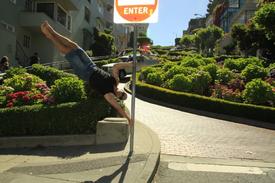Functional strength gains by leg pressing?

Azdak
Posts: 8,281 Member
This article was written by Chris Beardsley and posted on Bret Contreras' website.
http://bretcontreras.com/leg-press-functional-strength/
In the article, Beardsley looks at the common arguments AGAINST doing leg presses (vs squats) for functional training, and then reviews the literature to evaluate the validity of those arguments.
I don't quote entire articles (except my own), so you'll have to follow the link, but here is the final summary:
This is not really meant to be a "leg press vs squat" argument nor a "machine vs free weights" argument.
It's meant to point out that, especially for the average population that includes a large majority of MFP members, the "rules" for resistance training are not as cut and dried as they often represented in the forums. Everyone should be aware that there are many tools in the weightlifting toolbox and they should not be afraid to use any of them.
Guys like Chris Beardsley, Bret Contreras and Alan Aragon get a little dense sometimes with the science, but they are good reads for anyone who wants to delve into the science behind lifting (and learn 1,001 ways to do hip thrusts ;-) You can google their websites or follow them on Twitter for some good links.
http://bretcontreras.com/leg-press-functional-strength/
In the article, Beardsley looks at the common arguments AGAINST doing leg presses (vs squats) for functional training, and then reviews the literature to evaluate the validity of those arguments.
I don't quote entire articles (except my own), so you'll have to follow the link, but here is the final summary:
Leg press training, either alone or with other lower-body, machine-based training, improves measurable, functional strength in most populations, including diseased, elderly and young people.
It can increase walking efficiency, balance, vertical jump height, horizontal jump distance, short-distance sprinting ability, and the maximum number of bodyweight squats you can achieve in 30 seconds. No, I agree, it probably won’t be as effective for improving athletic performance as the conventional back squat in trained populations… however, if you think it won’t improve functional strength at all, or if you believe that it will somehow magically make an athlete perform worse, then I have a bridge to sell you. There is simply no evidence to support that idea and what we do know suggests exactly the opposite.
This is not really meant to be a "leg press vs squat" argument nor a "machine vs free weights" argument.
It's meant to point out that, especially for the average population that includes a large majority of MFP members, the "rules" for resistance training are not as cut and dried as they often represented in the forums. Everyone should be aware that there are many tools in the weightlifting toolbox and they should not be afraid to use any of them.
Guys like Chris Beardsley, Bret Contreras and Alan Aragon get a little dense sometimes with the science, but they are good reads for anyone who wants to delve into the science behind lifting (and learn 1,001 ways to do hip thrusts ;-) You can google their websites or follow them on Twitter for some good links.
0
Replies
-
Yea. I do my squats and deads, then my leg presses, and finally my leg curls and extensions.0
-
bumping for a good topic!
And as someone who is currently unable to squat (typical BB style) I very much like the outcome of this.0 -
Squat form has to be so perfect or there's cause for injury. For me, I personally love doing leg presses after my squats. It helps me feel it in different muscles depending on leg placement and adds variety. Also gives me a break before I do my deads. Like Chris, when I couldn't do squats due to an injury, it still helped me to feel powerful and keep motivated.0
-
Ok, i modify my position - machines aren't totally worthless, but they're not as good as freeweights. :bigsmile:
Actually i think it's fine to include some machines along with freeweights, but doing only machines can lead to a false sense of strength, since they don't match the coordination patterns used in the real world. For example, someone who leg presses a lot of weight might try to pick up piece of furniture and throw their back out, because their core muscles never learned to coordinate with the legs during heavy lifting.
Here's an interesting study:Results of this study indicate a greater improvement from FF (free-form strength exercises) over FX (fixed form exercises) in strength (58%), and balance (196%). Additionally, the FX reported increased pain levels while the FF group reported lowered overall pain levels.
http://journals.lww.com/nsca-jscr/Abstract/2008/01000/Strength_Outcomes_in_Fixed_Versus_Free_Form.12.aspx0 -
Ok, i modify my position - machines aren't totally worthless, but they're not as good as freeweights. :bigsmile:
Actually i think it's fine to include some machines along with freeweights, but doing only machines can lead to a false sense of strength, since they don't match the coordination patterns used in the real world. For example, someone who leg presses a lot of weight might try to pick up piece of furniture and throw their back out, because their core muscles never learned to coordinate with the legs during heavy lifting.
Here's an interesting study:Results of this study indicate a greater improvement from FF (free-form strength exercises) over FX (fixed form exercises) in strength (58%), and balance (196%). Additionally, the FX reported increased pain levels while the FF group reported lowered overall pain levels.
http://journals.lww.com/nsca-jscr/Abstract/2008/01000/Strength_Outcomes_in_Fixed_Versus_Free_Form.12.aspx
What's "better" is a matter of context.
You wouldn't put an overweight, untrained 65 year old female with no athletic background and a host of physical limitations on Starting Strength. At least I hope wouldn't.0 -
What's "better" is a matter of context.
You wouldn't put an overweight, untrained 65 year old female with no athletic background and a host of physical limitations on Starting Strength. At least I hope wouldn't.
Of course there are a few exceptions to my generalization. But assuming they got clearance from their doctor to do strength training.. if they can do a leg press, they can almost certainly learn to squat, at least partially.
I wouldn't recommend the power cleans though. It's an advanced exercise that doesn't belong in a beginner's strength book.0
This discussion has been closed.
Categories
- All Categories
- 1.4M Health, Wellness and Goals
- 398.2K Introduce Yourself
- 44.7K Getting Started
- 261K Health and Weight Loss
- 176.4K Food and Nutrition
- 47.7K Recipes
- 233K Fitness and Exercise
- 462 Sleep, Mindfulness and Overall Wellness
- 6.5K Goal: Maintaining Weight
- 8.7K Goal: Gaining Weight and Body Building
- 153.5K Motivation and Support
- 8.4K Challenges
- 1.4K Debate Club
- 96.5K Chit-Chat
- 2.6K Fun and Games
- 4.8K MyFitnessPal Information
- 12 News and Announcements
- 21 MyFitnessPal Academy
- 1.6K Feature Suggestions and Ideas
- 3.2K MyFitnessPal Tech Support Questions




